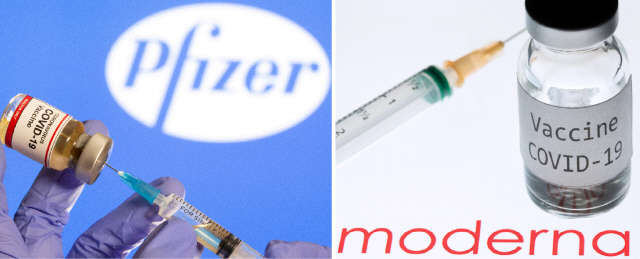Every 1 million people in 2 weeks from 11.1 to 5.5
Calm down with epinephrine injection… No death
CDC “4.2 times flu vaccine, but very safe”
19% have no history of past drug hypersensitivity reactions
PEG, which was used to increase stability, may be the cause
The number of allergic hypersensitivity reactions (anaphylaxis) after Pfizer’s and Modena’s COVID-19 vaccine decreased from 11.1 per million people two weeks ago to 5.5.
According to the Centers for Disease Control and Prevention (CDC) on the 6th, it was counted that at least 29 of the 5.3 million people who received the Corona 19 vaccine by 9 a.m. on the same day had hypersensitivity reactions. It is 4.2 times that of the flu vaccine, which is 1.3 people, or 5.5 people per million. However, no one died because of the epinephrine injection, because it calms down.
 viewer
viewer
The CDC also revealed more detailed results of a more detailed investigation of 21 of the 1.9 million Americans who had been vaccinated by the 23rd of last month, two weeks ago, allergic hypersensitivity reactions (11.1 per million). In fact, it can be seen as those who showed hypersensitivity to the Pfizer vaccine, which had an early approval date for emergency use. Their median age was 40, and most of them developed symptoms within 15 minutes. 17 out of 21 (81%) had a history of allergies or allergic hypersensitivity reactions to specific medicines and foods, but 4 did not.
Nancy Mesonie, director of the CDC’s National Center for Immune Respiratory Diseases, said, “It is true that there are many people with anaphylaxis reactions compared to the flu vaccine, but it is very safe.” “The number of Corona 19 deaths per day (2,000-3,000 people) Considering it, the benefits are much greater, so it is necessary to actively inoculate.”
CDC does not take the second vaccination if you have allergic hypersensitivity after the first vaccination. He asked to stay and observe his condition.
“PEG may be the cause of allergic hypersensitivity reactions,” said Peter Marks, director of the US Food and Drug Administration (FDA) Center for Biologics Evaluation and Research. PEG has been used in many biopharmaceuticals, but it is the first COVID-19 mRNA vaccine used in vaccines.
Pfizer and Modena’s vaccine is a pharmaceutical product that encloses a strand of genetic material (mRNA) designed to produce spike protein fragments of the corona 19 virus in human cells with nanoparticles such as PEG and lipid membranes (liposomes). PEG increases the stability and life span (half-life) of mRNA strands that are easily degraded when exposed to enzymes in the body at room temperature or at room temperature. Lipids, along with that function, help the mRNA enter muscle cells near the vaccination site.
 viewer
viewer
The problem is that many drugs that cause allergic hypersensitivity reactions contain PEG, and some people exposed to PEG have enough anti-PEG antibodies to cause anaphylaxis. In particular, if anti-PEG antibodies are induced by the first vaccination of Pfizer Modena vaccine, the risk of allergic hypersensitivity reaction increases during the second vaccination. According to a study by Dr. Samuel Lai, a pharmacologist at the University of North Carolina, in the United States, 72% of people have anti-PEG antibodies, and 7% are high enough to cause anaphylactic reactions. Anticoagulant candidates containing PEGylated RNA showed severe allergic reactions in 0.6% of clinical trials, and one person died, and the development was stopped.
However, there is a view that the amount of PEG in the vaccine is much lower than that of other drugs, and because it is injected into the muscle rather than intravenously, the level of anti-PEG antibodies in the blood rises rapidly and there is no high risk of allergic hypersensitivity reactions. “The risk is negligible given the low amount of lipids and intramuscular administration,” said Catalin Cariko, senior vice president of BioEntech, a German company that co-developed the COVID-19 vaccine with Pfizer.
Anaphylaxis refers to a rapid allergic reaction that occurs systemically within minutes to hours of exposure to certain drugs, food, or insect poison. It is often seen in patients with allergic rhinitis, food and drug allergies, asthma, atopic dermatitis, and chronic urticaria. Usually, cardiovascular system (low blood pressure, tachycardia, loss of consciousness, loss of consciousness), respiratory system (bilateral wheezing, bronchospasm, dyspnea), skin and mucous membranes (systemic urticaria, erythema, itching), gastrointestinal system (diarrhea, abdominal pain, nausea, vomiting) Accompanied by symptoms. In severe cases, life can be lost if proper first aid measures, such as intramuscular epinephrine injection, are not taken. / Reporter Lim Woong-jae [email protected]
< 저작권자 ⓒ 서울경제, 무단 전재 및 재배포 금지 >
